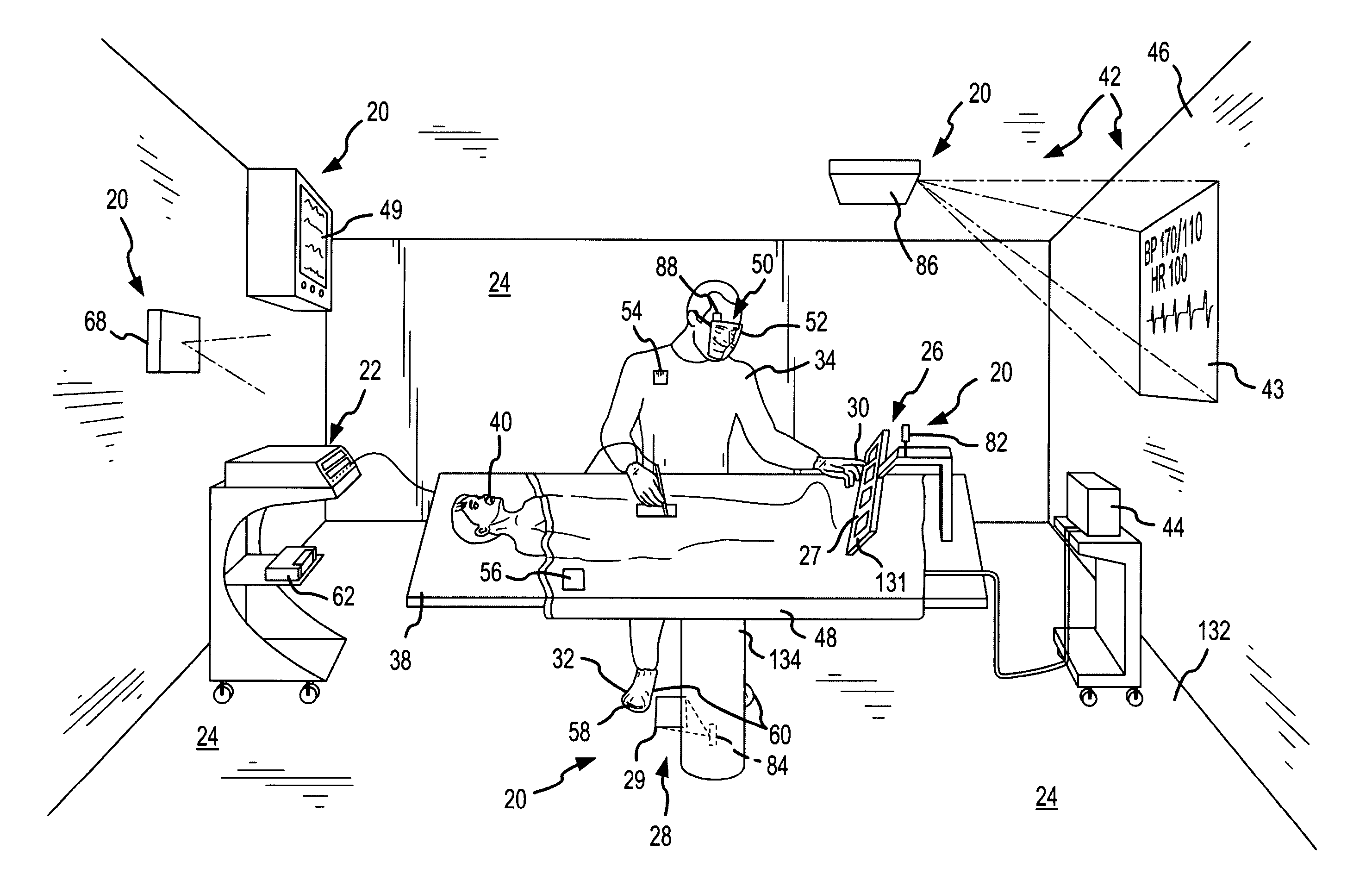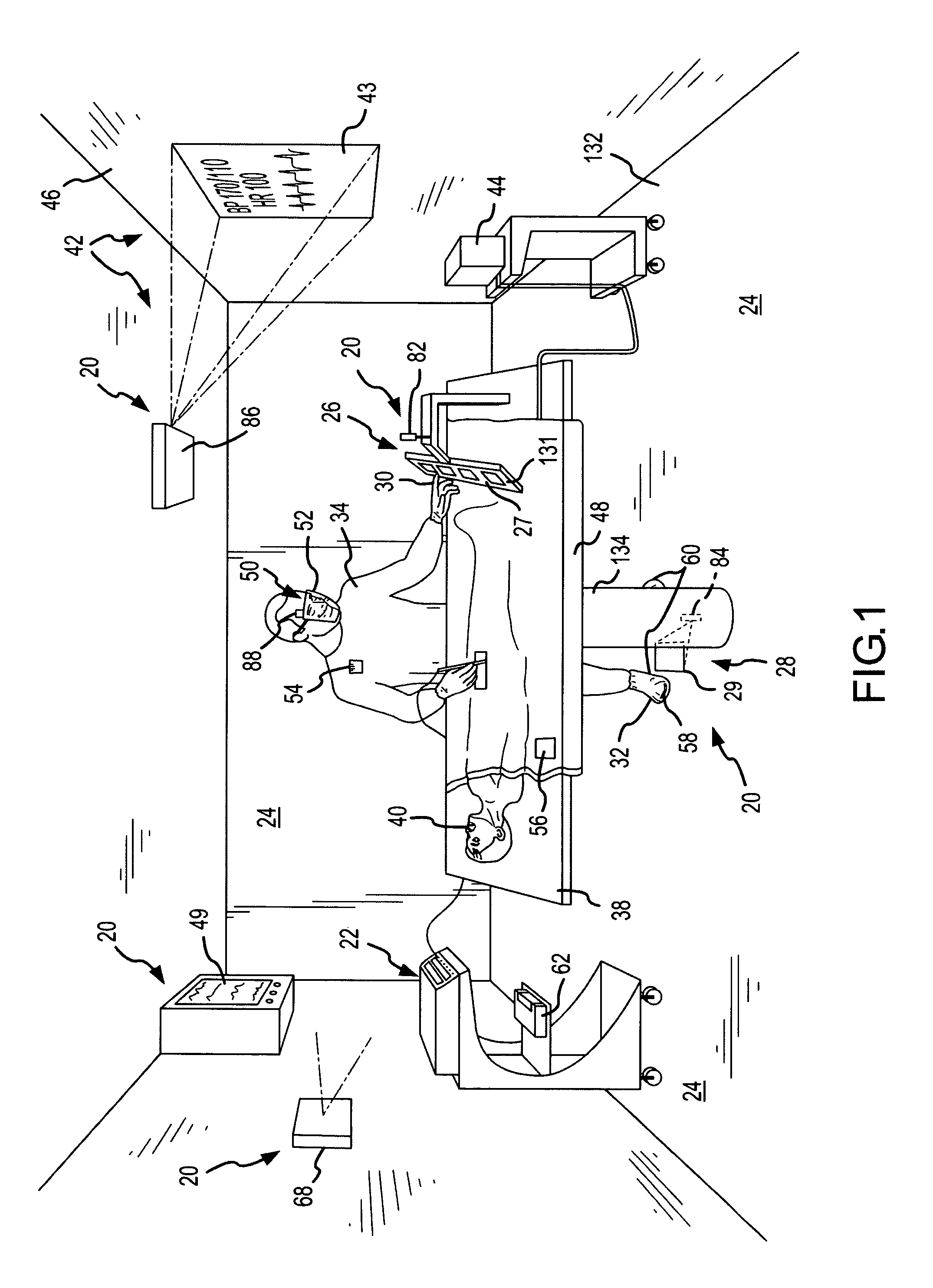Virtual operating room integration
a virtual operating room and operating room technology, applied in the field of virtual operating room integration, can solve the problems of inability to place the front panel controls of the surgical equipment within the sterile field, the necessity to rely on an assistant for indirect control of non-sterile surgical equipment the need to rely on an assistant for indirect control can become a distraction, so as to eliminate clutter and the risk of falling, direct and accurate control of the surgical instrumen
- Summary
- Abstract
- Description
- Claims
- Application Information
AI Technical Summary
Benefits of technology
Problems solved by technology
Method used
Image
Examples
Embodiment Construction
[0031]An exemplary form of the present invention is embodied in a virtual integration or control system 20 for controlling surgical equipment 22, among other things, in an operating room 24, as shown in FIGS. 1-3. The virtual control system includes a virtual control panel 26 and a virtual foot switch 28 created by projecting an image 27 of a control panel and an image 29 of a foot switch. Physical interaction of a finger 30 or foot 32 of the surgeon 34 with the control panel image 27 and the foot switch image 29, respectively, is then interrogated and interpreted as a control input to the surgical equipment. A system controller 36 (FIGS. 2 and 3) of the virtual control system 20 controls the surgical equipment 22 in response to that interrogation and interaction. For example, direct physical interaction of the surgeon's finger 30 with the projected control panel image 27 may result in adjusting the output power and output signal characteristics from the surgical equipment 22, and d...
PUM
 Login to View More
Login to View More Abstract
Description
Claims
Application Information
 Login to View More
Login to View More - R&D
- Intellectual Property
- Life Sciences
- Materials
- Tech Scout
- Unparalleled Data Quality
- Higher Quality Content
- 60% Fewer Hallucinations
Browse by: Latest US Patents, China's latest patents, Technical Efficacy Thesaurus, Application Domain, Technology Topic, Popular Technical Reports.
© 2025 PatSnap. All rights reserved.Legal|Privacy policy|Modern Slavery Act Transparency Statement|Sitemap|About US| Contact US: help@patsnap.com



